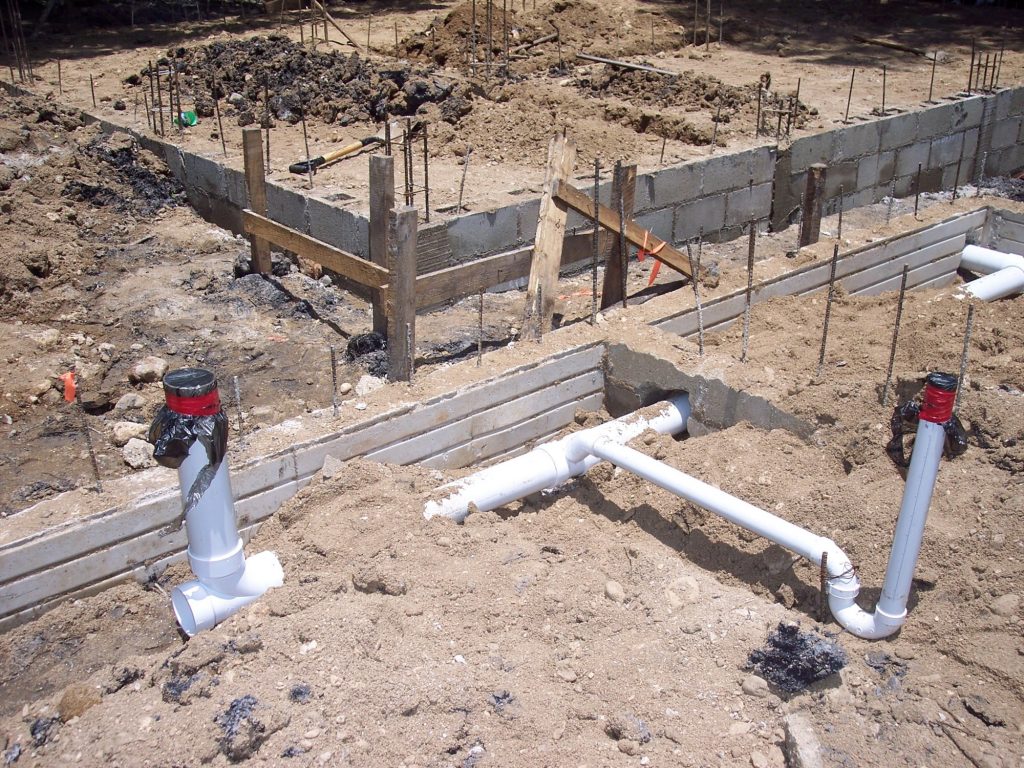5 Different Types of Housing Foundations You Need to Know About
You don’t need to be a civil engineer to understand the basic types of housing foundations. What most people know is that the foundation is a very crucial aspect of any construction work. Even though not visible when in a building, without a strong foundation, the house is prone to settling or even crumbling as a whole.
A house needs a foundation to settle the entire weight of the building on the soil surface. A good foundation distributes weight evenly across the entire foundation. In doing so, the foundation prevents part of the house or the entire house from settling.
In this piece, we’ll highlight the five most common types of foundation. Our main goal is to get you acquainted with foundations, so you know which type to settle for when building your home.
Why Is the Foundation so Important?
Most of the strength of any building lies in the foundation. As such, contractors and civil engineers are very keen when constructing the foundation. They have to follow strict codes to ensure the structural integrity of a building.
A basic house consists of the walling, slabs, roofing, fixtures, electrical, and plumbing installations. All these components of the house weigh significantly down on the surface you build them on.
Here’s why the foundation is important.
- The foundation bears the entire weight of the building, both live loads and dead loads. Live loads are loads on the structure that vary—like people and furniture. Dead loads are loads of the house structure itself including walls, trusses, and roofing.
- The foundation also prevents moisture from the ground from seeping into the house. This function is a secondary role the foundation plays. The construction for this purpose will depend on the soil moisture conditions in that particular area.
- Some folks live in natural disaster-prone areas. As such, the foundation should withstand such natural phenomena. The foundation withstands earthquakes and heavy flooding to keep the house upright after such events.
Please note that just any type of foundation can carry out the above functions. All you need is a strong, correctly built foundation to withstand the forces and maintain structural integrity.
That said, it is important to have a licensed contractor or civil engineer to build your house. There are plenty of fraudsters who could put your family’s safety at risk. Always ask for license and certification before engaging the services of an engineer.
Five Common Types of Housing Foundations
The type of foundation an engineer selects depends on a variety of factors. Most importantly, the technician considers the expected load the foundation must bear. Other factors to consider include the soil characteristics and moisture conditions of the area.
Sometimes technicians may consider the weather conditions and earthquake history of an area. That said, we mostly categorize foundations into two major types, shallow foundations, and deep foundations.
These categories further divide into other smaller subcategories. Here are five major types of foundations you should know.
1. Shallow Foundations
Shallow foundations are interchangeably known as spread footings or open footings. The terms shallow is because the foundation isn’t very deep on constructions. Roughly a few meters below the earth’s surface.
Typically if the depth of the foundation is lesser than the width of the foundation, then the foundation is shallow. The term “open” on-the-other-hand, is because the ground is “opened-up” to accommodate the entire volume of the foundation.
There are many types of shallow foundations, the common ones being, strip footings and raft foundations. Shallow foundations spread the entire weight of the foundation across the entire foundation. In doing so, there is no concentrated load on a single part that may exceed the soil bearing capacity.
2. Individual Footings
Individual footings are among the most preferred types of foundations for homes across the country. If a building has a couple of columns, you assign each column a footing of its own. This technique distributes the entire weight evenly across the footing.
The column usually sits on a rectangular or square footing. The footing goes a few meters deep inside the ground. The engineer determines the dimensions of the footings after a few calculations.
The technician must account for all relevant factors during the calculations.
3. Mat Foundations
Mat foundations are also known as raft foundations. These foundations are most common in buildings with a basement. The basement slab (floor structure) acts as the foundation.
Mat foundation finds applications in areas with weak soils. The entire weight spreads out across the entire slab such that each square measurement or the foundation bears tiny loads. Collectively, the foundation supports the entire weight of the structure.
Some people opt for poly grout pumping when constructing the mat foundations. In doing so, they can level the slab surface and fill any voids during the construction process.
4. Pile Foundations
Pile foundations are one of many deep foundation types. Contractors use pile foundations when the surface layer of the soil is weaker than the subsequent layers. They also opt for pile foundations when building high rise structures.
Pile foundation construction involves driving a long cylinder of strong material deep into the soil surface. This cylinder is what we call the pile.
These piles penetrate deep into the stronger rock layers and rest the weight on top of these surfaces. They find application in high rise structures with concentrated loads at specific points on the building.
There are two types of pile foundations, friction piles, and end bearing piles. Friction piles use friction between the pile and soil to withstand the weight of the building. End bearing piles rest on a strong rock surface, which easily holds the entire weight of the building.
5. Raised Perimeter Foundation
Raised perimeter foundation is a foundation that engineers build around the house perimeter. This foundation is also known as strip footing.
Raised perimeter foundation can combine with spread footing or raft footings for greater effect. The strip foundations mainly support the walling in this case. The spread footing, on the other hand, supports the slabs and internal structure loads.
Leave Foundation Engineering to the Experts
We can’t stress how important it is to have professionals construct different types of housing foundations. The foundation is a delicate structure, and any mishaps during construction may be detrimental to the entire structure. Ensure you get the correct people for the job, or you’ll end up regretting it.
Check out our other pieces for more informative reads!



